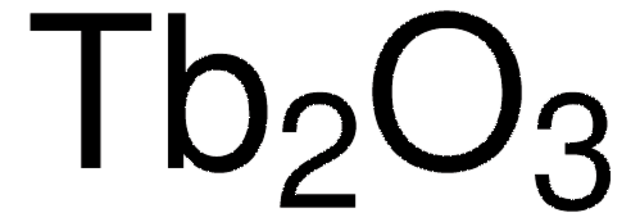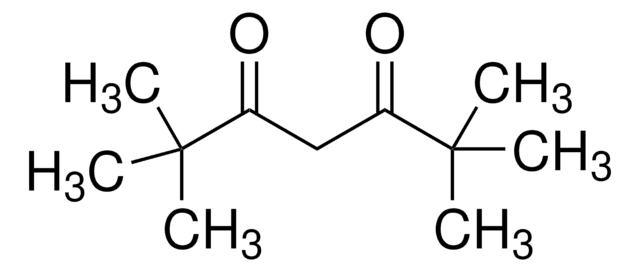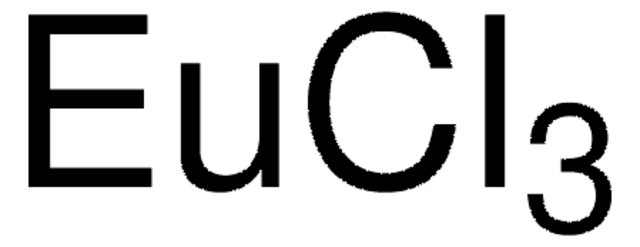Kluczowe dokumenty
212903
Terbium(III) chloride hexahydrate
99.9% trace metals basis
Synonim(y):
Heksahydrat trichlorku terbu, Sześciowodny chlorek terbu, Sześciowodzian trichloroterbu
About This Item
Polecane produkty
klasa czystości
for analytical purposes
Poziom jakości
Próba
99.9% trace metals basis
Formularz
solid
przydatność reakcji
reagent type: catalyst
core: terbium
zanieczyszczenia
≤1500.0 ppm Trace Rare Earth Analysis
gęstość
4.35 g/mL at 25 °C (lit.)
ciąg SMILES
O.O.O.O.O.O.Cl[Tb](Cl)Cl
InChI
1S/3ClH.6H2O.Tb/h3*1H;6*1H2;/q;;;;;;;;;+3/p-3
Klucz InChI
ULJUVCOAZNLCJZ-UHFFFAOYSA-K
Szukasz podobnych produktów? Odwiedź Przewodnik dotyczący porównywania produktów
Powiązane kategorie
Zastosowanie
It can also be used as aprecursor to synthesize a label-freeaptasensor for the detection of ofloxacin (OFL) residues in the food.
Hasło ostrzegawcze
Warning
Zwroty wskazujące rodzaj zagrożenia
Zwroty wskazujące środki ostrożności
Klasyfikacja zagrożeń
Eye Irrit. 2 - Skin Irrit. 2
Kod klasy składowania
11 - Combustible Solids
Klasa zagrożenia wodnego (WGK)
WGK 2
Temperatura zapłonu (°F)
Not applicable
Temperatura zapłonu (°C)
Not applicable
Środki ochrony indywidualnej
dust mask type N95 (US), Eyeshields, Gloves
Wybierz jedną z najnowszych wersji:
Masz już ten produkt?
Dokumenty związane z niedawno zakupionymi produktami zostały zamieszczone w Bibliotece dokumentów.
Klienci oglądali również te produkty
Produkty
The rare earth elements impact nearly everyone in the world. All of the people living in advanced technological countries and almost all those living in third world countries utilize the rare earths in their everyday living—the car that one drives (gasoline is refined from oil using rare earth catalysts and catalytic converters reduce the polluting emissions from the automotive exhaust), watching the news on TV (the red and green colors in TV screens), the telephones and computers we use to communicate (the permanent magnets in speakers and disc drives), just to name a few examples.
Global Trade Item Number
| SKU | GTIN |
|---|---|
| 212903-5G | 4061838772459 |
| 212903-25G | 4061838772442 |
Nasz zespół naukowców ma doświadczenie we wszystkich obszarach badań, w tym w naukach przyrodniczych, materiałoznawstwie, syntezie chemicznej, chromatografii, analityce i wielu innych dziedzinach.
Skontaktuj się z zespołem ds. pomocy technicznej













